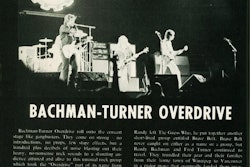Specter of CSA-led driver shortage holds reward potential for truly safe drivers
By Todd Dills
After talk of a 2011 driver shortage of “unprecedented levels” began to rear its head last year, Truckers News “Marathon Trucker” columnist Jeff Clark remarked that the term “driver shortage” is inaccurate. “If someone cannot find a driver to deliver a load at the rate they want it delivered at they whine ‘driver shortage,’” he said, it’s analogous to this: “I want to buy a new Cadillac for $10,000. They would not sell it to me. Hmmm, must be a Cadillac shortage.”
The real shortage was in driver pay, he suggested, and he’s backed up by a near-majority of respondents to an eTrucker.com poll conducted in November who said that pay was the biggest factor in carriers’ difficulties attracting and retaining quality drivers. At the November “Perfect Storm” conference of recruiting staff and management, put on in Nashville, Tenn., by the Truckload Carriers Association with Affiliated Computer Services and sponsored by Truckers News publisher Randall-Reilly, the mood was hopeful that, with a safety enforcement program soon to be in place putting teeth into carriers’ demands of higher rates from shippers, a new era could be coming for driver pay.

Combined with a significant freight rebound, CSA 2010 (recently rebranded “CSA” for “Compliance, Safety, Accountability” by the Federal Motor Carrier Safety Administration) could be expected to “drive rates up,” said current TCA chairman John Kaburick, president of Earl L. Henderson Trucking, in his introduction of the program. “We’ll see drivers making $70,000-90,000 a year. I think we’ll become a lot more attractive industry with a lot more qualified, skilled people.”
WHAT IS THE PRIMARY CAUSE OF THE “DRIVER SHORTAGE” NOTED BY ANALYSTS?
low driver pay — 40%
none, there is no driver shortage — 24%
lack of home time — 13%
lack of respect — 8 %
CSA 2010 — 6%
tightening health regulations — 5%
high turnover with economic rebound — 4%
Source: etrucker.com — 261 responses
Quantifying a shortage
FTR Associates’ driver surplus/shortage indicator shows an estimated shortage of varying magnitude since the third quarter of 2009, during which time the number of loads moved had just begun to rise from the bottom the freight market experienced in the second quarter of 2009. Though FTR projects a growing shortage into 2011, reaching a magnitude of 124,000 drivers needed in the fourth quarter of 2011, the shortage projections don’t exactly track to freight demand growth. By the fourth quarter of 2011, freight will be just more than halfway back to its recent historic high in the fourth quarter of 2006, FTR says, suggesting factors no one in the industry was experiencing at that time putting a constraint on the driver pool.
“CSA 2010 will be a huge problem,” FTR President Eric Starks told an industry gathering at the Great American Trucking Show in August. “The industry will struggle to keep drivers in the system.”
FTR Senior Consultant Noel Perry echoes Starks, adding that FTR’s best estimates are for CSA with other regulatory challenges to shrink the pool of existing drivers by 210,000 by the end of 2012. “In aggregate,” Perry says, “what the data says is somewhere in the neighborhood of 10 percent of the drivers are being exposed as having had problems. What we’re saying here is we expect that about a third of those people [or 3.3 percent of the entire population of drivers] will be eliminated, unfixable.”
Todd Spencer, Owner-Operator Independent Drivers Association executive vice president, sees a driver shortage as ironic — and dubious. “The industry purged itself of 30 percent of its drivers in the last two years,” he says. “They’re everywhere, but they’re not coming back to work for you if you’re not going to pay them anything.”
The last time in recent history carriers were trumpeting a driver shortage like they are today was during the domestic economic rebound of 2004-05, Perry says. “The industry hires approximately 150,000 drivers in a normal quarter. In order to do that you have to train 170,000, and to do that you’ve got to process 600,000-700,000 applications and contact more than a million people.”
As with today’s situation, during the preceding recession, fleets reduced overhead in office recruiting staff and other areas, cutting costs to the bone in an effort to survive. The industry, Perry adds, is not exactly bringing them back en force because “they’re afraid there will be another recession.”
Only time will cure that problem for fleets hesitant to hire, Perry suggests, as his firm doesn’t see a double dip recession in its forecasting. What does it see? Freight will rise by 3 percent over the course of 2011 to return to early-downturn levels (equivalent to the third quarter of 2008 in volume). FTR forecasts at the same time a growth in utilization, or the number of available trucks in service, to near 100 percent levels as fleets continue to be reluctant to buy.
If FTR is correct, the industry will be near 130,000 drivers in the hole. It all “leads to a shortage in the neighborhood of twice what we had in 2004” into 2012, Perry contends, holding possibilities for both new hires and drivers already in the system.
“Right now the supply/demand situation for drivers is in equilibrium,” Gordon Klemp, principal of the National Transportation Institute, said in November. “While it’s getting hard to hire a qualified driver, everybody’s still getting by. But if we get a significant increase in freight tonnage, there will be a scramble for drivers like we’ve never seen,” holding positive implications for driver pay.
Outlook for pay
OOIDA’s Todd Spencer is skeptical of carrier claims of near-future gains in rates and pay: There “may be some long-term economic benefits,” he says, for owner-operators who run a tight ship from CSA’s identification and punishment of “carriers that have pretty shoddy safety practices.” But, he adds, “the same people have been saying driver pay needs to increase by 50 percent all the way back to 1990. If that were anything more than giving lip service to the problem, we wouldn’t still be talking about it.”
Less does equal more “Everything out here is going to constrain capacity,” Avondale Partners economist Donald Broughton told a trucking industry gathering in November about the near-future industry landscape. “When supply is constrained and demand’s improving, what will that do to pricing?” he asked, then pointed to the ceiling.It’s hard to see the future with any certainty whatsoever without understanding the past, Spencer notes, detailing a long erosion of the wages and benefits an over-the-road driver could expect over the years since deregulation brought about carrier consolidation and a much greater degree of competition to the truck rate picture.
It’s a dynamic Truckers News examined in its 2007 30th-anniversary issue, showing that inflation-adjusted pay for non-management employees in the truck transportation sector (including company drivers) began declining in the late 1970s and didn’t stop until it leveled off in 2000.
Spencer recalls how he directly experienced the $10,000-Cadillac dynamic Jeff Clark notes. “Carriers were talking about a driver shortage back in the 1970s,” he says, “and I can remember a company president telling me and a group of other owner-operators at one time, ‘Look, if you guys don’t want to haul these loads [for a particular rate], we’ll bring some people in that will.’ And they did. They brought in about 20 new trucks and hired drivers, and they lasted about a year.”
Furthermore, deregulation brought about the new phenomenon of the national truck carrier from the formerly largely regionalized, unionized trucking world. “The rising stars rejected the mold that trucking had evolved to,” Spencer says. “Everyone was going to be a national carrier, and they weren’t interested in hiring drivers who only wanted to work in regional areas with good pay. They brought in a lot of untrained or poorly trained people who didn’t expect to make a lot of money — the other requirement was that you had to be willing to be away from home” for long periods of time.
In some ways, many carriers have learned the lessons Spencer hints at — average length of haul has been falling since the last “driver shortage” period of 2004-05. Today, the number of owner-operators moving one-way loads of average length shorter than 500 miles well exceeds those involved in 500-mile-plus hauls, according to data compiled by Truckers News sister magazine Overdrive. As owner-operators and others have found opportunity in more regional/local operations, what Spencer calls “the predictability of the job” increases, making trucking more attractive. “But even in those operations,” he adds, “driver pay needs to go up.”
Riverside, Calif.-based owner-operator Thomas Blomberg, leased to Marten Transport, agrees. “I’d be really content with this new business model,” he says, “if there was not so much waiting time between loads,” if operations were streamlined for better coordination of short haul drop-and-hook. Furthermore, he says, Marten does “have a detention pay program, but a lot of times it’s not available because it was not part of the contract” with the shipper, he says, but he’s hopeful for a rate increase in the coming months as he surveys the carrier landscape, where like everybody else he’s seen the ads touting mileage pay premiums.
Some suggest that, in spite of the shifting legal landscape governing relationships with independent contractor workers, carriers need to examine their owner-operator/carrier relationships with an eye on providing more assistance to help owner-operators more effectively manage their businesses. Blomberg, for one, has been a client of owner-operator business services provider ATBS since he became an owner-operator eight years ago. Blomberg says his ATBS advisor, Chris Harrington, makes it his business to get not only into accounting and finance issues but reach deep even into equipment maintenance considerations. “For what ATBS charges,” Blomberg says, “they’re being overworked and underpaid.”
No hands went up in the large main conference room at the Hilton Downtown Nashville in November when ATBS President Todd Amen asked TCA/ACS “Perfect Storm” recruiting/retention meeting attendees if anyone had all the leased owner-operators they needed. “The last two years, 30,000 owner-operators went out of business,” Amen said. “And if that hadn’t happened, and they were smart and nimble enough and had the ability to stay in business…maybe you would now have plenty of capacity. Our job is to help them the best we can to stay in business” to avoid future post-recession capacity issues.
The National Transportation Institute routinely tracks the pay landscape in its National Survey of Driver Wages. Most recently, says NTI’s Klemp, anticipation of regulatory challenges and other factors led to striking results to a particular survey question. NTI asked whether carriers expected to raise pay for drivers in the next year. Around 80 percent of fleets said yes.
“I think the value of drivers will go up,” Klemp says. According to his survey’s results, in dry van and flatbed the decline company driver pay saw during the downturn has already begun reversing, though it hasn’t yet gotten back to 2007 highs. “In lieu of moving pay because rates haven’t come back just yet, an awfully high percentage of the carriers have instituted referral or sign-on bonuses” in the last 15 months or so, Klemp adds, saying he’s seen bonuses of as high as $10,000 for a team.
At the “Perfect Storm” TCA meeting, Jet Express President Kevin Burch said his company reinstituted sign-on bonuses in 2010 in their auto-industry specialized business, for instance. Burch also added that driver safety practices are becoming more and more germane to driver pay with the advent of CSA, and not just in the common safety-bonus fashion. Via the FMCSA Pre-Employment Screening Program (PSP), it’s now possible for carriers to include past driver roadside inspection data in their qualifications process during hiring. Burch, along with others at the conference, envisioned pay scales being tied in the future more specifically to safety, perhaps to driver CSA scorecards. Drivers “can use this scorecard to their advantage,” Burch said, referring to FMCSA’s internal CSA methodology, which rates drivers for targeting problems in carrier interventions. Though FMCSA decided early on that no driver rating information or system would be public, third-party CSA carrier scorecard provider Vigillo has long offered carriers the ability to rate their current drivers using FMCSA’s published Driver Safety Measurement System methodology.
And now, says company President Steven Bryan, via www.roadsideresume.com, Vigillo is offering all drivers in their system — upward of a million as of mid-November, Bryan said, or about a third of the total driver population — access to their own score free of charge. “Every truck driver in America can come to us and say, ‘I’d like to see my scorecard,’” Bryan says. “It’ll look exactly like the PSP report that we’d give to a motor carrier.”
The same driver scorecards will be available through Vigillo to prospective employers, too, making the company for the first time a specialty credit reporting agency. Just as with DAC reports and with the PSP (available to drivers for $10; a comprehensive report, minus the scoring, of driver inspection and crash data, looking back three and five years, respectively), you will have an opportunity to contest erroneous information.
If you’re thinking this is just another prehire service to keep tabs on, Bryan at least sounds positive about Vigillo data quality and at once committed to the cause of drivers when talking about the Roadside Résumé. “Somebody’s got to get these drivers access to their scores,” he says. “We’re anxious to get out there and give some transparency to this whole thing from the perspective of the drivers.”
With rates on the verge of rising, he and other industry watchers suggest, it’s time for the safe driver with a clean PSP and a good CSA score to really reap rewards.













